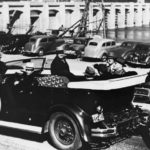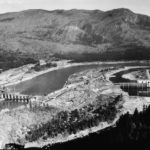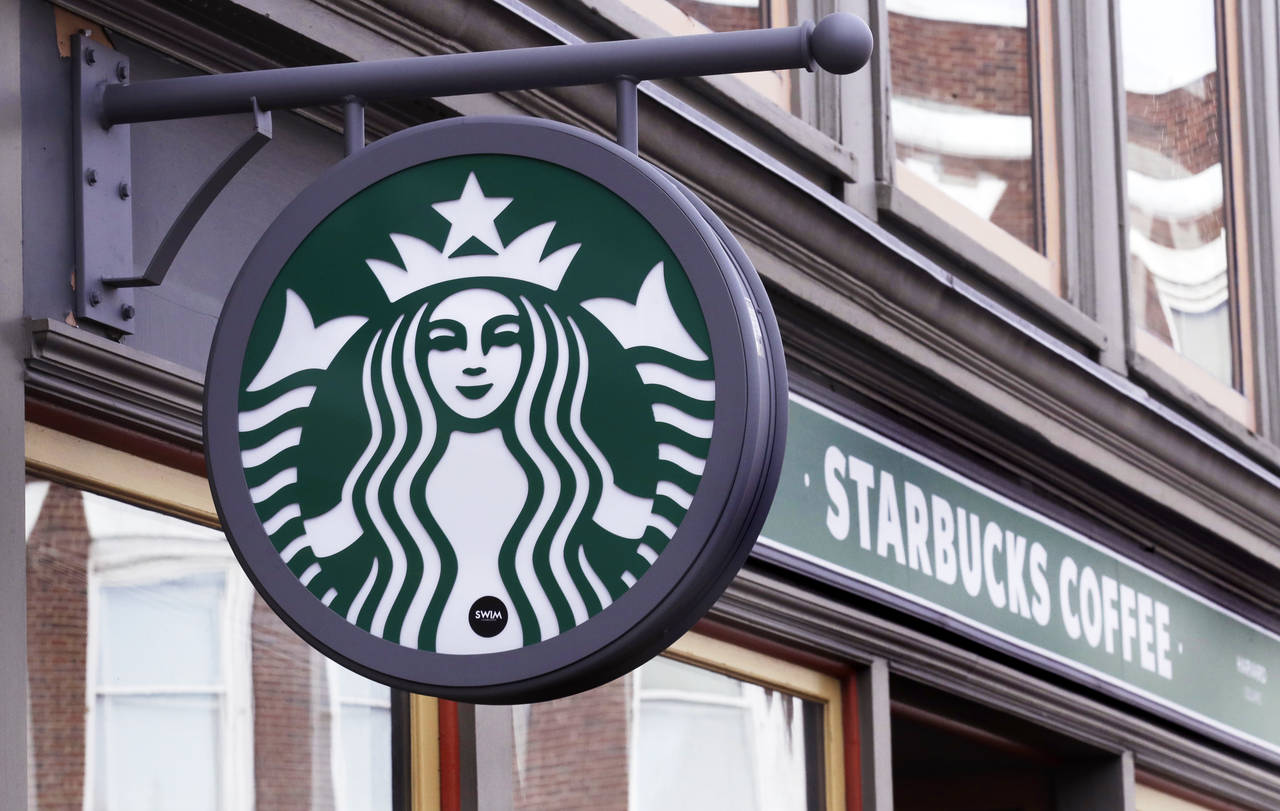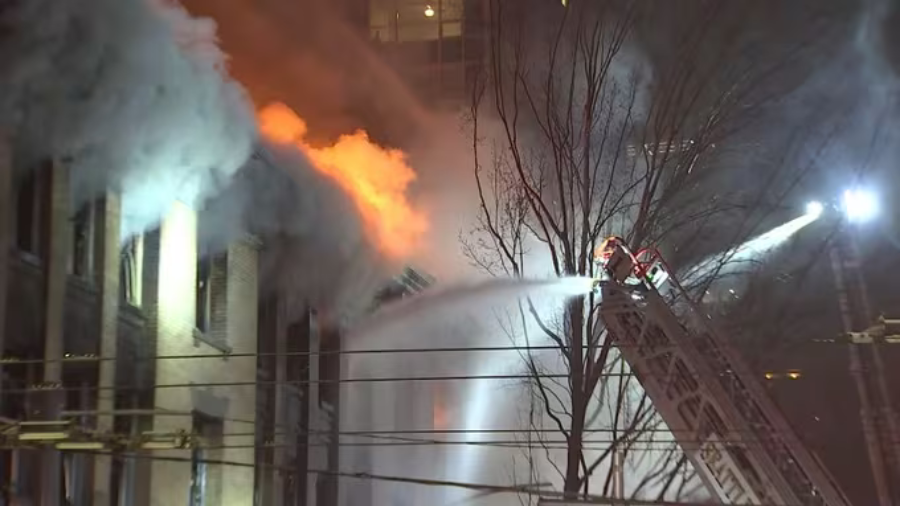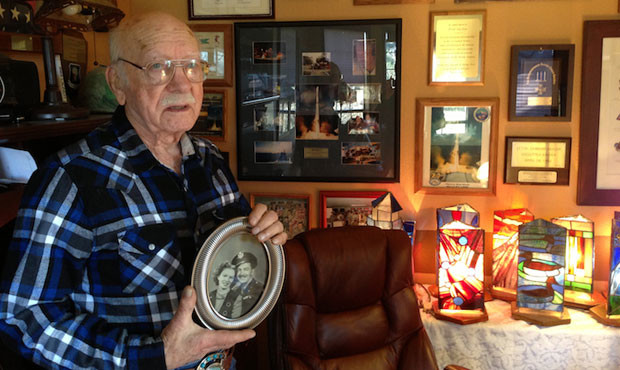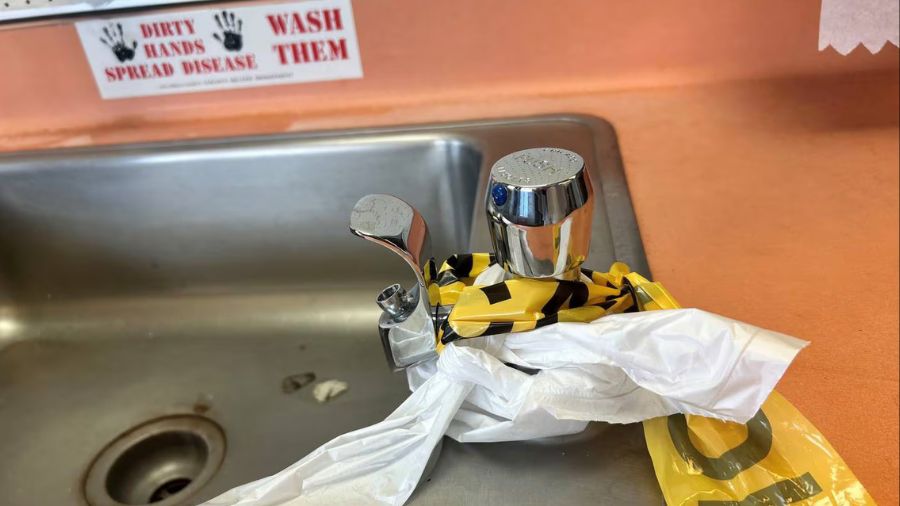The power of FDR and the Bonneville Dam
Sep 20, 2017, 6:31 AM | Updated: 9:45 am
Franklin Delano Roosevelt was no stranger to the Pacific Northwest, and a concrete reminder of his legacy is still making an impact here 80 years after it was built.
FDR visited the Seattle area often throughout his life. He came here first as assistant secretary of the Navy; then as governor of New York and a candidate for the White House; and finally, several times as Commander-in-Chief, including a “secret” visit during World War II in September 1942.
RELATED: Mysteries remain 75 years after Japanese attack on Columbia River
One additional reason for many of these visits was because FDR’s daughter Anna Boettiger, son-in-law John Boettiger, and grandkids lived on Mercer Island.
But FDR also made a habit of visiting the banks of the Columbia River – in particular, a spot about 40 miles east of Portland. He visited the area first in 1932, then again in 1934 and once more on Sept. 28, 1937, when the not-quite completed Bonneville Dam hydroelectric project was dedicated before a big crowd and a nationwide radio audience.
“My friends of the Northwest, today I have a feeling of real satisfaction in witnessing the completion of another great national project, and a pleasure in the fact that, in its inception four years ago, I had some part,” the president told the thousands gathered and countless numbers listening at home. He and First Lady Eleanor Roosevelt had arrived by train from Boise, Idaho, and traveled by motorcade from Portland to the dam.
“Almost exactly three years ago, I inspected the early construction stages of this dam at Bonneville,” President Roosevelt continued. “The more we study the water resources of the nation, the more we accept the fact that their use is a matter of national concern.”
Karim Delgado is a public affairs specialist with the Army Corps of Engineers in Portland. He says President Roosevelt made so many visits and took such an interest in the Bonneville Dam because of the Great Depression and FDR’s desire to create jobs, in part, through massive infrastructure projects.
In a way, Delgado says, the high-tech Bonneville Dam was really the leading edge of FDR’s “New Deal” policies to restart the economy and reduce unemployment in the wake of the worst financial crisis in US history.
“At the time, as an engineering marvel, it was unprecedented,” Delgado said. “It’s now actually the smallest of all the dams on the Columbia, but as the first, it was really symbolic, I think, for [FDR] of bringing power to people, both literally and figuratively.”
The general location and basic design of the Bonneville Dam can be traced to a federal government study in the 1920s that identified potential sites around the country for hydroelectric generation facilities.
Prior to that, Karim Delgado says the Army Corps of Engineers’ studies of the Columbia had been focused only on improving navigation. But this was before irrigation had really expanded agricultural output east of the Cascades, and the demand for river travel for passengers and freight – which had been crucial throughout much of the 19th century – had been supplanted by railroads.
“[Navigation] wasn’t really seen as creating much capacity for how much it was going to cost,” Delgado said. “So they really started looking toward its feasibility as a power generation project, and navigation became ancillary.”
But even as a hydroelectric project, Bonneville languished during the President Herbert Hoover administration as an expensive undertaking that, if built, would produce more electricity than the market needed in those years.
That all changed, Karim Delgado says, when the Great Depression hit in 1929. Candidate Roosevelt campaigned in Portland in 1932 and promised to build the dam, and even took time to make a visit out to the future site. Then he beat Hoover in the 1932 election.
FDR’s New Deal kicked into gear just months after the new president was inaugurated in 1933. Funding for Bonneville Dam was approved in September, and construction was underway before the end of the year.
In addition to generating power, the design of the Bonneville Dam was ultimately altered to radically improve navigation on the Columbia River. The dam complex, with its huge lock – big enough to accommodate ocean-going ships and barges as they shifted from higher water to lower water and vice-versa – eliminated the last vestiges of the large rapids on the river known as “the Cascades” (or the Cascade Rapids).
The Cascade Rapids had been a bane to steamboats and even canoes on the river for decades, and had chagrined many a 19th-century traveler who was forced to “portage” around the rapids by getting out of the water and walking, or by paying to ride a special private railway along the riverbank. By some accounts, the rapids also gave the Cascade mountain range its name.
Once the big lock was in operation at Bonneville – replacing a smaller and cruder lock built in the 1890s – the Columbia was navigable by large vessels as far upriver as The Dalles. Additional dams and locks would later make the Columbia and Snake River system navigable all the way to Lewiston, Idaho.
RELATED: ‘Worst president’ left his mark on Pacific Northwest
Karim Delgado says that the navigable Columbia and Snake, combined with the expanded irrigation east of the Cascades that also came about from dam construction, created a confluence of forces that was a huge boon to agriculture for the Inland Northwest.
But even though that confluence of forces wasn’t obvious in advance to most people, it was clear, Delgado says, to FDR.
“Roosevelt, in his public talks, mentioned the vision he had, this sort of prophecy, this sense of ‘if you build it they will come,’” Delgado said. “And I think he was validated in retrospect.”
“More than $20 billion a year of traffic goes through those navigation channels” nowadays on the Columbia River each year, Delgado said.
It’s interesting to note that in the closing moments of Roosevelt’s speech at Bonneville, he briefly, if somewhat obliquely, addressed the gathering clouds elsewhere that would soon coalesce into World War II.
To hear FDR tell it that day 80 years ago, in 1937, war and weaponry were for other countries, not for the United States.
“As I look on Bonneville Dam today,” Roosevelt said, “I cannot help the thought that instead of spending, as some nations do, half their national income in piling up armaments and more armaments for purposes of war, we in America are wiser in using our wealth on projects like this, which will give us more wealth, better living and greater happiness for our children.”
During the final words of the passage, the president’s voice was, for the first time during the Bonneville Dam event, almost drowned out by the applause.
And maybe in September 1937 a hydroelectric dam on the Columbia River was, all about wealth, better living and happy kids – and not about armaments.
Within a few years, as the pages of history turned, Karim Delgado of the Army Corps says that the electrical power generated by the Bonneville Dam ended up becoming an integral part of the “Arsenal of Democracy.”
“I think it ended up being pretty fortuitous, because Bonneville played such a major part in providing the power necessary for electricity-hungry war resources like aluminum,” Delgado said. “[President Harry] Truman actually said in a speech in Idaho in 1948, ‘if it weren’t for Bonneville Dam, it would’ve been impossible to win the war.’”
With abundant and inexpensive electricity available because of Bonneville Dam, the federal government built aluminum plants in and around Vancouver, Washington and the Portland, Oregon area beginning in 1940 to supply the war effort. Aviation manufacturing depended on unprecedented amounts of lightweight but strong aluminum to crank out bombers and other warplanes by the tens of thousands.
In addition to the aviation industry, some historians say that Bonneville and Grand Coulee electricity was critical to the work at Hanford to refine plutonium for the atomic bomb program – but there’s some debate about that, too.
After they dedicated the Bonneville Dam, FDR and Eleanor visited Mt. Hood, then traveled by train from Vancouver, Washington to Seattle where they spent a day with their daughter Anna Boettiger and their grandkids. The family remained out of sight with no scheduled activities, though the president was taken on a driving tour of the city to see his grandkids’ school, the Seattle Art Museum in Volunteer Park, the old Post-Intelligencer building (where the Boettigers worked) at Sixth and Pine, and the UW campus.
The next day, the president and his entourage took an official trip to Victoria, BC aboard the Navy Destroyer USS Phelps (named for Thomas Phelps, a member of the crew of the USS Decatur, when that Navy vessel was here during the Indian War of 1856) where they met with the lieutenant governor and the premier of the province. From Victoria, Eleanor Roosevelt headed back Seattle for a flight to an event in Chicago. FDR spent the night at Lake Crescent before traveling by car to Tacoma, by way of Lake Quinault, to board his special train and begin the journey back to Washington, DC.
Eight decades later, Bonneville Dam is still generating electricity, and FDR’s legacy as president during the Great Depression and World War II is still debated in some circles.
For David Woolner, senior fellow and historian at the Roosevelt Institute and professor of history at Marist College, certain elements of that legacy aren’t debatable at all.
In addition to directing construction big infrastructure projects like Bonneville Dam, “I like to say that Franklin Roosevelt built the house that we live,” Woolner said earlier this week.
RELATED: Northwest settlers created DIY government in 1843
“We can disagree about moving the furniture around or doing some remodeling, but basically we’ve been living in this house, and I don’t think people want to do away with things like Social Security or Federal Deposit Insurance or the regulation of the stock market,” Woolner said.
“These are all things that came about because of [FDR’s] determination to manage capitalism and, frankly speaking, if you ask me, he saved capitalism.”


